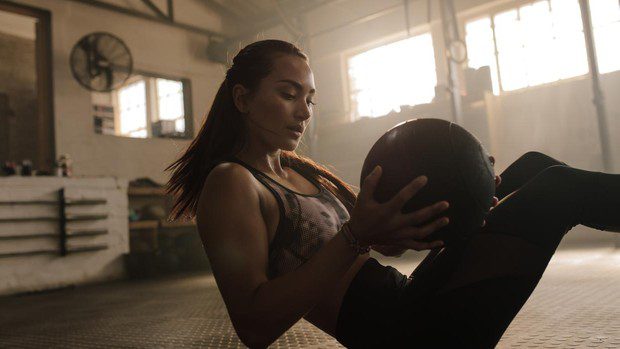Contents
What is the “core” and why do coaches insist on training it?
Fitness
A good “core” job increases sports performance, helps prevent lower back injuries, lower body injuries, including shoulders, improves physical appearance and strengthens proprioception

What do we visualize when a coach explains that we must “keep the core activated” when performing a certain exercise? The image that is usually drawn in the mind is that of the classic “tablet”, that is, the usual thing is to think of the rectus abdominis. But the “core” encompasses a much broader body area, as explained by José Miguel del Castillo, author of the manual “Current Core Training” and a Bachelor of Science in Physical Activity and Sports. In addition to the anterior abdominal area (rectus abdominis, obliques and transverse abdomen), the «core» includes the posterior part in which the gluteus maximus, the square lumbar and other small stabilizing muscles. But it also has expansions in the upper zone like the diaphragm and the scapular area of the shoulder blades and in the lower one, with the pelvic floor. In addition, if we talk about sports performance we would also have to include the shoulder girdle (the shoulder blades) and the pelvic girdle. “This means that the core concept itself encompasses more than 29 pairs of muscles, in addition to bone levers and joints, attached nerves, ligaments and tendons,” explains Del Castillo.
What is the «core» for
To explain the core functionality The expert first goes back to those years in which the classic training of the abdominal area was based on doing a “crunch”, a flexion and a shrinkage of the abdominal area that could be transformed into partial shrugs by raising only the area of the shoulder blades, or in totals, raising the trunk completely to touch the knees with the elbows. But over time the different sports biomechanics schools revealed through their research and subsequent scientific studies that the main function of the «core» was not to generate movement but to prevent it And that was a radical change in the classic way of training the «core».
The key to the «core» is, therefore, the image of a «rigid functional block» that allows transfer forces from the lower body to the upper body and vice versa. «This zone of confluence of forces allows a path from top to bottom or from bottom to top, for example, it serves to hit hard or hit with energy with a tennis racket … If you have a rigid functional block, the functional transfer of forces it is much more efficient. Your athletic performance increases because you run more, jump higher and throw further, ”argues Del Castillo.
Therefore, one of the functions of the «core» is increase athletic performance. And of that there is scientific evidence. But there are still more studies on the “core” that corroborate another of its functions: to prevent and avoid injuries and pathologies in the lumbar area. And when we talk about this kind of injury We are not only referring to those that may occur during sports practice, but those that anyone can suffer in their daily life. “A gardener needs as much or more core work to prevent his lumbar injuries than an elite athlete,” reveals the expert.
In fact, in today’s society, in which we do not stop looking at our cell phones and also lead to a predominantly sedentary life, cases of nonspecific low back pain, which is one of which we do not know its origin and on which evidence does not usually appear in a radiological image (often unnecessary and that alarms unnecessarily) that tries to determine where that pain comes from.
Aesthetics and body awareness
In addition to improving athletic performance and helping to prevent injuries, core work allows improve physical appearance as it contributes to the reduction of the abdominal girth.
It also helps to strengthen the pelvic floor and improve proprioception (the ability of our brain to know the exact position of all parts of our body at all times).
Another of the contributions of the “core” work that is currently being done is, according to Del Castillo, that it has led to an improvement in two principles of basic training such as variety and the fun. “Now we are working on kinetic chains that allow different muscles to agglutinate through a sequence of movements such as, for example, a motor pattern of the woodcutter; whereas before it was worked in an analytical and isolated way ”, he reveals.
How often to work the “core”
For José Miguel del Castillo, core training should be a basic preventive work (with two specific sessions a week) for everyone, not just for athletes. However, he recognizes that when planning workouts this will depend on the time that each person can dedicate to physical activity because if too much weekly training volume is prescribed, there is a risk of not creating adherence or even abandonment.
It will also depend on whether this person perceives some type of signal that indicates that he must work the area specifically as in cases in which the pelvic area is not well controlled, the lumbar area is rotated a lot or manifests an excessive lumbar arching, it is that is, when you cannot differentiate between movement in the spine or in the hips (called lumbopelvic dissociation). “The ideal is to work the ‘core’ with the exercises that I call ‘2×1’, that is, with exercises that allow two different jobs to be carried out at the same time,” he proposes.









